Kriol Global was created with a single goal in mind – increasing local exports from Cape Verdean-owned businesses and product placement within Cape Verdean communities on an international scale. Kriol’s mission is to supplement the market with network-driven profit margins with purpose. Kriol Global is here to create and cultivate our network of artisans and business owners driven by social impact. Kriol Global, Inc. will fund Kriol Global Foundation with every profit.
“Nos ku Nos.” (Us with Us)
To create a global cohort of Cape Verdean-owned businesses by promoting services and the resale of goods.
The pánu di téra distinguishes itself from other African fabrics by its blend of aesthetically developed, yet unusual and complex patterns which combine an Islamic or Hispano-Moorish influence with an African weaving technique, practically identical to that used by the Manjak-Papel (Carreira, 1983, p. 139) woven from multi-coloured cotton thread. Traditionally, the predominant colours are indigo blue and white.
This fabric has shaped the history of Cape Verde, especially during the period between the 15th to the 17th centuries, with production falling during the eighteenth century. Highly valued along the west coast of Africa, the cloth was an integral part of the commercial trade in both goods and enslaved people and played a role in increasing the demand for slave labour in the archipelago.
Author, Ana Maria Garcia Nolasco Da Silva. October 18, 2018. Designing National Identity Through Cloth: The Pánu di Téra of Cape Verde. Retrieved from http://www.buala.org/en/to-read/designing-national-identity-through-cloth-the-panu-di-tera-of-cape-verde


